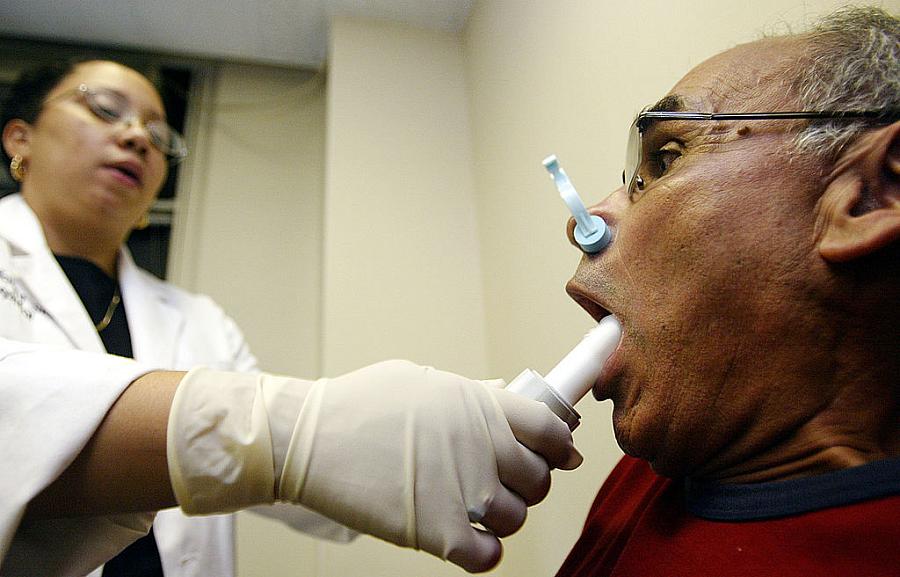Question your assumptions about racial differences in health

A man exposed to air pollutants near Ground Zero after Sept. 11 inhales deeply before blowing into a spirometer to check for airway abnormalities.
(Photo by Mario Tama/Getty Images)
We’ve long given up the idea that justice is blind. We need to give up the idea that health care is blind, too.
The notion that we are one human race but that we still have different racial identities — imposed upon us by a range of societal forces — can be a very hard concept to internalize. There’s extensive research showing that race can influence the amount and quality of care people receive. That means racism itself can cause poor health outcomes, but it can also limit access to care and lead to inferior care for patients of different races.
A study from 2002, for example, found that “self-reported racial discrimination at the individual level predicted poor health status,” especially with mental health. Blacks were found to be less likely to see a physician than people identified as White or other racial categories in a 2012 study.
If Blacks do gain access to care, the care itself is too often of lower quality. A study from 2007 found that Blacks wait about an hour longer in the emergency room to receive care than non-Blacks. If you are experiencing a medical crisis that requires you to go to the emergency room, an hour is a very long time.
One of the easiest examples to understand is the simple spirometer. Lundy Braun, a professor of medical science and Africana studies at Brown University, published a book in 2014 called “Breathing Race into the Machine: The Surprising Career of the Spirometer from Plantation to Genetics.” The next year, in an article in the Canadian Journal of Respiratory Therapy, she wrote about how “the spirometer has gained widespread use across the world for the diagnosis and management of many respiratory diseases in both specialist and primary care settings.”
But the spirometer has also long been programmed with “correction” factors that adjust for lung capacity based on race. If you enter into a modern spirometer that a patient is Black, the results will be adjusted by as much as 15%. That can mean the difference between a person being correctly diagnosed with a disease, misdiagnosed with something else, or not diagnosed at all and receiving the treatment they need.
Anne Fausto-Sterling, one of Lundy’s colleagues at Brown, wrote for the Boston Review in 2016:
Technicians present spirometry results ‘corrected’ for race, so that for an African American to receive a diagnosis of impaired lung function—for example, a worker seeking disability compensation for lung damage from asbestos—he or she has to be dramatically sicker relative to a white American before receiving an equivalent disease diagnosis.
Braun shows how these adjustments are based on little more than assumptions by White people that Black people must have less lung capacity, among many supposed deficiencies defined by race.
Instead, as Braun notes, differences in lung capacity found when comparing people who appear or self- identify as White and people who appear or self-identify as Black are much more likely to result from lived experience, environmental conditions, and other factors. But not race, which is a human-made construct. As Braun writes:
Across the globe, there is a continuum of human phenotypic and genetic variation that cannot be apportioned into discrete categories. By featuring race with only marginal attention to the intersection of race and social class, we risk ignoring the complex and dynamic relationship of lung function and the environment.
We mistakenly choose race as the driver of differences in health outcomes instead of racism and discrimination of all kinds. That should make us think about the less obvious ways that fabricated racial divisions pervade health care. One of the ways journalists can rise to the occasion presented by the global protests against racism in all aspects of our lives is to look for the ways that racism has seeped into the fabric of our hospitals, clinics and health care programs.
They won’t all be as obvious as the spirometer.
